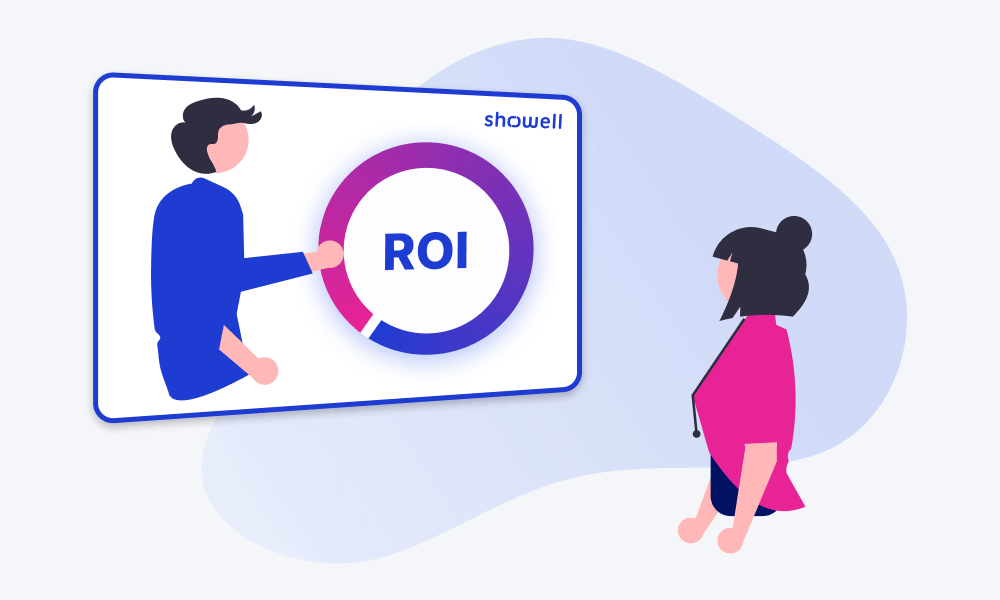The sales pitch matters—it's the decisive factor that could seal a deal or cause potential partners to walk away. Traditional sales techniques, while effective, are no longer enough to captivate an audience.
Today, the art of storytelling reigns supreme. It's a persuasive tool, a means to engage, build connections, and above all, establish trust. The success of any sales pitch depends on the emotional journey that prospects are guided through.
Storytelling in sales is powerful, persuasive, and memorable, with a scientifically-proven impact on decision-making. But knowing is just the first step. The secret lies not just in telling a story, but in telling a compelling one, one that resonates, that has the power to draw people in and make them care.
Crafting a Compelling Story: Key Elements

In this context, what elements constitute a compelling story? How do you craft a narrative that not only sells your product but also embeds your brand into the customer's consciousness?
The answer: by understanding the fundamental elements that make up a captivating story. The backbone of any compelling story relies heavily on three essential elements: characters, conflict, and resolution.
These ingredients, when intertwined effectively, can transform a routine sales pitch into an engaging narrative that resonates with your audience. Let’s explore each of these elements:
Characters
Every great story begins with compelling characters. In the context of sales, the characters in your narrative might include your company, your products or services, your team, and most importantly, your clients or customers. Take Apple, for instance. They've consistently positioned their products as not just devices, but as characters that embody innovation, style, and simplicity.
The customer, too, is a crucial character, portrayed as a savvy, style-conscious individual who values cutting-edge technology. When crafting your own story, consider the unique attributes or your unique selling points (USP) of your 'characters'. How does your product or service stand out? How does it interact with the client, and how does it transform their life or business? These considerations can help you create a narrative that is truly compelling.
Conflict
Conflict is what drives the story forward. It's the challenge or problem that needs to be overcome. In sales, this typically manifests as the problem your product or service is designed to solve.
For instance, a company selling project management software might introduce conflict in their story by highlighting the disarray and inefficiency of managing projects without their solution. This establishes a clear problem and sets the stage for the resolution. Remember, the conflict you introduce should be relatable to your potential customers. It should mirror the challenges they face, making your story resonate more deeply with them.
Resolution
The resolution is where your product or service shines - it's the solution to the problem, the hero that resolves the conflict. This is where you demonstrate the value your business offers and how it can change your customer's world.
Continuing the previous example, the project management software company might show how their product streamlines processes, improves communication and ultimately leads to better project outcomes. This resolution not only provides a solution to the problem but also creates a vision of a better future, encouraging potential clients to invest in their product.
Crafting a compelling sales narrative is about more than just selling a product or service; it's about taking your potential clients on a journey. By focusing on characters, introducing conflict, and providing a satisfying resolution, you can create engaging stories that not only sell but also build strong, lasting connections with your customers.
5 Proven Storytelling Techniques in Sales
The art of storytelling transcends mere narration. It's a potent tool with different techniques that can significantly improve the effectiveness of your sales pitch. Here are a few proven methods, alongside some compelling examples:
1. The Hero’s Journey
The Hero’s Journey, a concept popularized by Joseph Campbell, involves a protagonist who embarks on an adventure, faces and overcomes a crisis, and then returns home transformed. In sales, your customer is the hero, and your product or service is the guide that helps them overcome their problems.
Consider the enterprise software company, SAP. Their marketing campaigns often present the narrative of businesses transformed by their solutions. The 'hero' in this case could be a company struggling with inefficient data management. SAP positions itself as the guide, providing solutions that enable the company to overcome obstacles and achieve its goals.
2. “In Medias Res”
In Medias Res, or 'in the midst of things', is a narrative technique where the story starts in the middle of the action to captivate the audience immediately. For sales, you could begin your pitch by diving straight into the benefits of your product or a case study that demonstrates its effectiveness.
For a B2B example, consider Mailchimp's marketing strategy. They often begin their pitch with a compelling snapshot of a business that significantly improved its customer outreach and conversion rates by using Mailchimp’s email marketing services. This immediate plunge into a success story piques interest and makes the audience curious about how Mailchimp can help their business too.

3. The Cliffhanger
Cliffhangers leave a story unresolved, generating curiosity and encouraging the audience to find out what happens next. In sales, this could mean sharing part of a case study and then inviting potential clients to a meeting or webinar to learn the rest of the story.
Webinars and conference hosts often use this technique. They may share part of a successful business transformation story but leave the pivotal turning point or climax for the actual event. For instance, a cybersecurity firm may share a story about a company that faced significant security threats, leaving the details of the resolution for their webinar.
4. The "Why" Story
This technique revolves around the purpose or mission of your company. It connects with customers on an emotional level and often involves the origin of your business or the problems you aim to solve.
Software giant Microsoft often shares its mission "to empower every person and every organization on the planet to achieve more". This isn't just about selling their products; it's about connecting with businesses on a deeper level by sharing their purpose and the values that guide their innovations.
5. Customer Success Stories
These are real-life examples of how your product or service has helped other customers. These stories are highly relatable and build trust with prospects.
Showell uses this particular technique. We share how businesses from different sectors have benefited from using sales enablement, showing prospects concrete examples of their software’s effectiveness in solving real-world business problems.
By using these storytelling techniques, you can captivate your audience, differentiate your brand, and illustrate the value of your products or services in a relatable, engaging manner.
Remember, B2B sales are not just about transactions; they're about building relationships, and stories are an excellent way to establish and strengthen these connections.

How to Adapt Storytelling Techniques to Your Sales Strategy
Adapting storytelling techniques to your sales strategy doesn't have to be a daunting task. Here are practical ways to incorporate storytelling into your sales pitch:
1. Understand Your Audience
First and foremost, know your audience. What are their needs, pain points, and goals? Once you understand these, you can tailor your story to address them. A technology company, for example, might appeal to a potential healthcare sector client by crafting a narrative around the challenges of data management in healthcare and how their solutions can help address this.
2. Develop a Story Repository
Create a database of success stories, case studies, testimonials, and anecdotes related to your products and services. Whenever you need to craft a sales pitch, you can refer to this repository. For instance, if you're pitching a project management tool to a software development company, you could draw on success stories relevant to software development.
Find out more about Showell's Sales Content Management and how it can help you to manage, present and share your success stories →
3. Train Your Sales Team
Your sales team should be well-versed in your company's story, the product's story, and customer success stories. Training your team in storytelling techniques can help them deliver compelling pitches that resonate with potential clients.
Sales training is not just a one-time event; it is a transformative journey that starts from the very first impression on a new hire's first day and continues throughout the first few months of their tenure. The ultimate objective is to expedite their path to complete productivity by providing them with the necessary skills and knowledge.

4. Use Various Mediums
Don't limit yourself to just written or verbal stories! Use videos, infographics, and presentations to share your stories more effectively. This could range from a video case study showing how your product improved a client's business operations, to an infographic depicting the growth a customer experienced after using your services.
5. Review and Refine
Constantly evaluate the effectiveness of your storytelling techniques. Gather feedback from clients, and assess the engagement and conversion rates associated with your sales pitches. If a certain story isn't resonating as expected, don't hesitate to refine it or try a new approach.
To conclude
To conclude, adapting storytelling techniques to your sales strategy is about making your pitch more relatable, engaging, and persuasive. It's about moving away from a 'hard sell' approach and towards building genuine connections with your potential clients.
In the world of B2B sales, the art of storytelling can be your key to unlocking new levels of engagement and success. By harnessing the power of characters, conflict, and resolution in your sales narratives, you're not just selling a product or service—you're taking your clients on a journey, one where their business challenges are overcome with your solution as the guide.
Don't just tell your clients about your product—take them on an unforgettable journey, and make your solution the hero of their story.
Learn next:
-
Crafting a Compelling Product Story for Winning Sales Presentations
- List of 10 Best Sales Pitch Examples to Win More Deals
-
10 High-Impact Types of Sales Collateral That Drive Results + Examples
- How to Close a Presentation?
-
5 Essential Elements of a Winning Sales Proposal in B2B Sales
- Asking for the Sale: When and How to Do It + 10 Questions You Can Use
Ready to put these storytelling techniques into practice and take your sales pitch to the next level? Start by experiencing first-hand how Showell can revolutionize your sales presentations. Book a demo below so you can provide a visually engaging, story-driven platform for your sales pitches.




